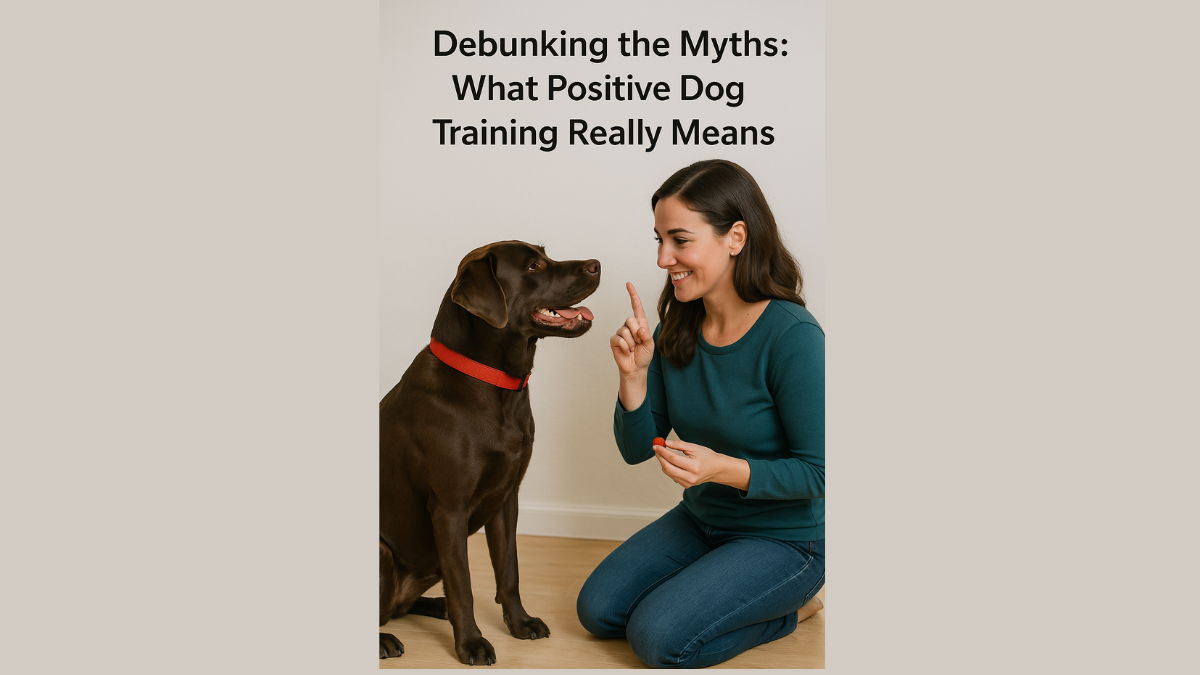Debunking the Myths: What Positive Training Really Means

Positive training doesn’t mean permissive, soft, or slow—it means clear, consistent, and effective. Let’s bust the biggest myths about this approach.
Debunking the Myths: What Positive Training Really Means
There’s no shortage of opinions about how to train a dog, especially when it comes to working breeds like gundogs. One of the most misunderstood approaches is positive reinforcement training. People often assume it’s only for pets, puppies, or dogs who are naturally obedient. But nothing could be further from the truth.
Let’s take a closer look at some of the most common myths about positive training—and why they don’t hold up in the real world.
1. “Positive training means bribing the dog.”
Many people picture a trainer waving a sausage in front of a dog’s nose just to get it to sit. That’s not training—it’s bribery.
What we actually do:
Positive reinforcement teaches dogs that after they offer a behaviour, a reward may follow. Rewards are earned, not used as lures forever. And over time, rewards become less frequent and are replaced with real-life motivators—like being sent for a retrieve or moving forward in the beating line.
It’s about building value in behaviour, not dependency on food.
2. “It only works for soft or easy dogs.”
The idea that positive training only suits gentle, handler-pleasing types is outdated.
The truth:
All dogs learn through consequences. A high-drive spaniel or a headstrong lab often thrives with this approach. In fact, trying to overpower a determined dog can lead to conflict, stress, or shutdown. But giving that dog clear information and letting them earn what they want? That builds true reliability.
3. “Positive training means never saying no.”
Another big myth is that reward-based trainers just let dogs run riot and never set boundaries.
The truth:
Positive training is full of boundaries—but they’re taught with forethought. Rather than punishing mistakes, we teach what to do, create structured environments, and use clear cues. We prevent problems before they start and reinforce the behaviours we do want to see.
It’s not soft—it’s smart.
4. “You can’t rely on rewards in the field.”
Some believe that when adrenaline is high and birds are flying, only correction-based training will hold a dog steady.
The truth:
Dogs trained through positive reinforcement can be rock solid—when training is layered carefully. Reliability comes from repetition, clarity, and building up distractions slowly. If a behaviour has been reinforced well enough, it becomes second nature.
And let’s be honest: a dog working in partnership because it wants to, not because it fears the consequences, is the dream.
5. “It takes too long.”
“Traditional” methods are often seen as quicker and more direct.
The truth:
Positive training may take a little more planning upfront—but the results tend to stick. You spend less time fixing broken behaviours or rebuilding confidence. Dogs trained this way often progress faster once foundations are set because they understand what’s expected and enjoy working with you.
6. “It’s not for real working dogs.”
Some trainers claim positive methods don’t belong in the competitive or working dog world.
The truth:
Plenty of top dogs in agility, obedience, heelwork, and detection are trained this way. Gundogs are no different. Fieldwork just requires adapting the same principles to suit that environment—pairing rewards with real-life outcomes like retrieves, hunting, or being released to run.
7. “Positive = permissive.”
Perhaps the most harmful myth is that positive training is too lenient.
The truth:
Good positive trainers have very high standards. The difference? We get there by rewarding what’s right, not punishing what’s wrong. It requires planning, consistency, and excellent observation—not just force.
Conclusion
Positive reinforcement isn’t about being soft—it’s about being effective, fair, and building a partnership based on trust. It works for bold dogs, sensitive dogs, gundogs, and pet dogs alike.
So next time you hear someone dismiss positive training as too soft, too slow, or too permissive, feel confident that you're on the right track. You’re working with your dog, not against them—and that’s something worth standing by.
Categories: : Training
 Sue Watkins
Sue Watkins 